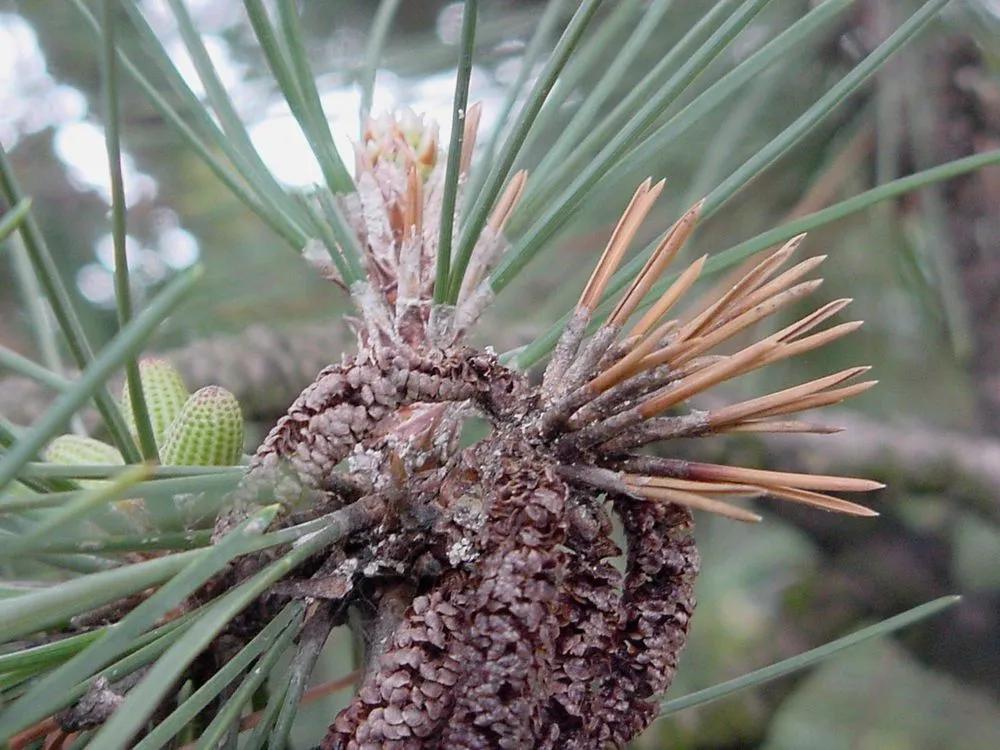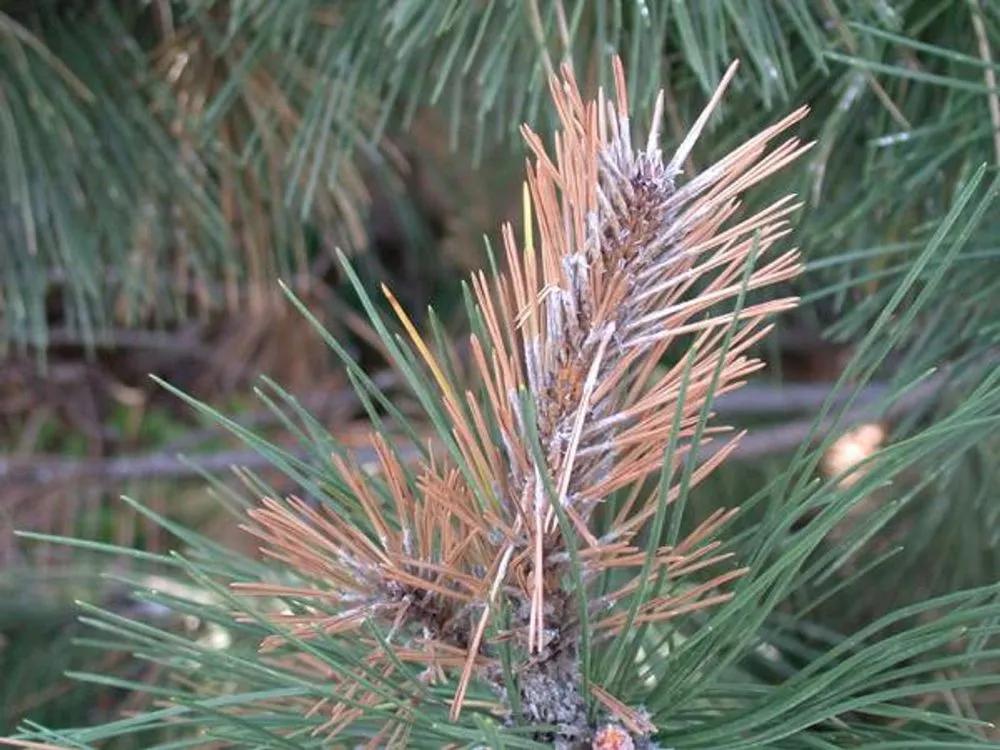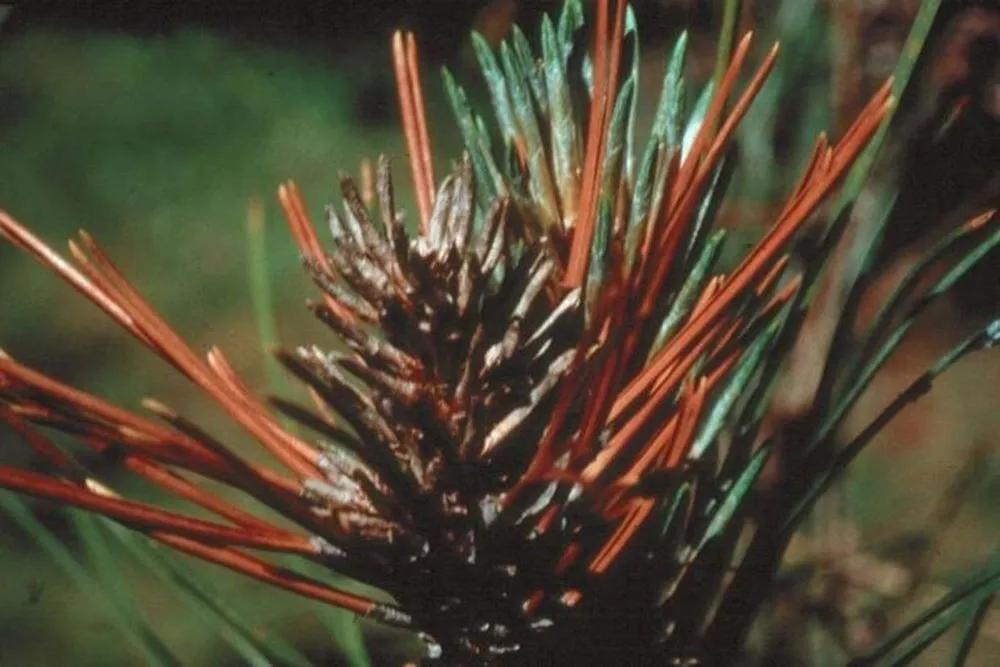This fungal disease, formerly known as Sphaeropsis, is especially common among conifers. Its most prevalent victims are Austrian pine, red pine, Mugo pine, Ponderosa, and scots pine. This illness can attack seedlings, but it mostly prefers trees older than 15 years. If the tree is twice this age, so 30 years old or more, it is very attractive to these bugs. In the forests, this disease isn’t so visible, so trees are more inclined to it if they are planted in the garden and are not taken care of properly. Such factors as compacted soils, and droughts, only contribute to the problem.
Diplodia Tip Blight In Plants



Signs of damage
- Disfiguration. This is one of the most prominent signs of this disease in the conifers.
- Dying of the branches. It happens when the tree is heavily infected.
- Brown needles. Another important sign is that needles are the most vulnerable part of conifers regarding this disease.
- New shoots are stunted. The disease affects the plant’s growth, so new shoots are already weakened.
- Fungal fruiting bodies on the dead needles. It is one of the later stages of the disease.
How to prevent
If you live in an area where cold and wet weather is the most common, then avoid planting conifers that are non-resistant to this disease. Because wet conditions are the most pleasant environments for fungi. Taking proper care of your tree is the best method of disease prevention; you have to provide the plant with an adequate level of mulching, watering, fertilizing, etc.
Heal
Removal of the infected parts is required because they improve the tree’s look and contribute to its vitality since harmful spores are held in the cons. The application of fungicides is helpful, especially on the new shoots, because it reduces infection on them.
Go Premium to continue reading
Also you’ll get unlimited access to disease identification and all the other beneficial features
More problems
